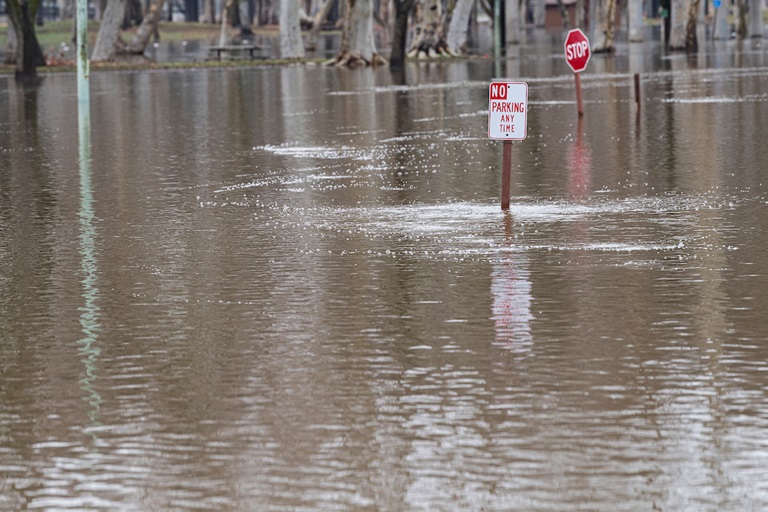REGION– Governor Gavin Newsom has announced his revised budget proposal will include $492 million in funding to help protect Californians from ongoing flooding impacts in the Central Valley and throughout the state. The one-time funding will support at-risk communities, including those in the Tulare Basin, respond to the impacts of this year’s winter storms and better withstand future flooding.
What Governor Newsom said: “California is facing unprecedented weather whiplash – we just experienced the driest three years on record, and now we’re dealing with historic flooding. Our investments must match this reality of climate-driven extremes. We’re committing even more resources to support communities up and down the state as they continue responding to the impacts of this year’s storms.”
The Governor’s May revision of the budget, which will be announced Friday, invests $290 million in new flood proposals:
- $125 million to support preparedness, response and recovery related to the 2023 storms – funding shifted from drought contingency to flood contingency to address the weather whiplash California is facing;
- $75 million to support local flood control projects;
- $25 million to expand the current California Small Agricultural Business Drought Relief Grant Program to provide direct assistance to eligible agriculture-related businesses that have been affected by the recent storms;
- $25 million for potential additional disaster relief and response costs in this fiscal year to address immediate impacts;
- $40 million for the San Joaquin Floodplain restoration
The $290 million is on top of the Governor’s January proposal of $202 million in flood investments to protect urban areas, improve levees in the Delta region and support projects in the Central Valley – bringing total flood investments to nearly $500 million.
The Governor’s budget also includes proposed legislation that codifies provisions from recent executive orders that allow for the safe diversion of flood flows for groundwater recharge purposes. These provisions would make it easier to capture floodwater to recharge groundwater by setting clear conditions for diverting floodwaters without permits or affecting water rights.
Additionally, the Governor announced that the state will fund raising the Corcoran Levee in the Tulare Basin, which is key to protecting critical infrastructure, including large correctional and medical facilities, and public safety for the immediate surrounding communities. This marks the third time the state or federal government has intervened to raise the levee. Due to over-pumping groundwater, the ground beneath the levee has subsided. The U.S. Army Corps of Engineers (USACE) made repairs to the levee in 1969 and again in 1983. The state’s funding will allow the local flood control district to raise the levee to 192 feet.
The state’s funding will be contingent upon on locals’ ability to meet a set of criteria to ensure the work is done efficiently and at the lowest possible cost to taxpayers.
BACKGROUND:
State officials have been on the ground since storms first started hitting, supporting and coordinating emergency response. California has since shifted to focus on flood prevention and recovery efforts, while continuing to respond to lingering drought impacts, and will support local response in the coming weeks, months and years.
The state response to flooding, both in the Tulare Basin and across California, includes:
- Over 1.7 million sandbags and roughly 21,700 supersacks distributed to help prevent flooding;
- 12,000 feet of muscle walls constructed;
- Over 54 million pounds of rock and sand used to shore up rivers and levees;
- Over 60 shelters opened for folks who got displaced by flooding and snowfall;
- Over 600 comfort kits distributed to impacted families;
- Over 3.5 million miles of California roads plowed or maintained.
Governor Newsom joined state and local officials and community leaders in the Tulare Basin at theend of Aprilto survey recent flooding. Also last month, the Governor’s Office of Emergency Services (Cal OES), the Department of Water Resources (DWR) and USACE met with county officials and emergency response personnel in the Tulare Lake Basin to help organize local flood response plans to prepare for snowmelt in the coming months.
The state, in partnership with USACE and local entities, is prioritizing snowmelt forecasting, reservoir operations, flooding assessments and flood response support. California is also working closely with county and other local government partners to share the latest advance planning tools DWR has used to support other flood prone areas of the state and to help local agencies in the basin prepare for flooding. DWR has also launched a $5 million program to provide temporary pumps to local water districts to increase flood diversions.
In late March, Governor Newsomsigned an executive orderto support the ongoing response to flooding by expediting levee repairs, floodwater diversion and other emergency response activities. California also secured a Presidential Major Disaster Declaration to support storm response and recovery in Tulare County and other impacted counties. Following the Disaster Declaration, Disaster Recovery Centers across the state are now open, serving as central hubs to connect community members and businesses with support.




